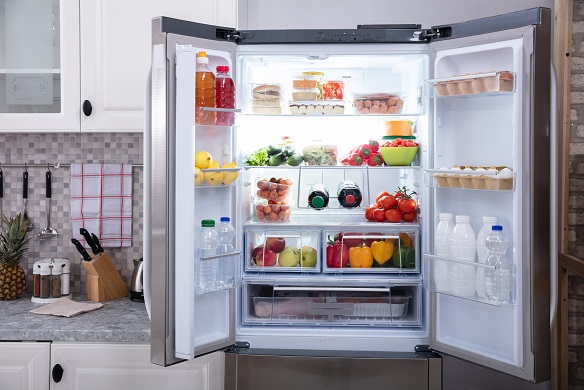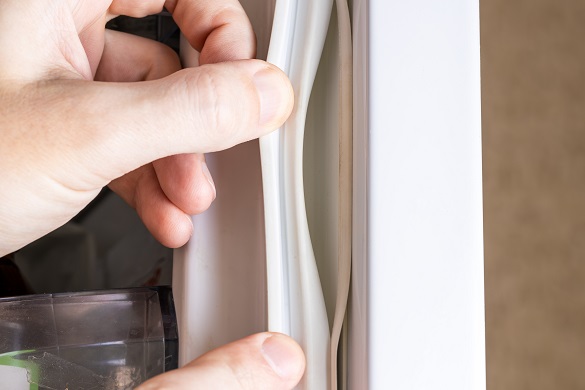
7 ways to make your fridge last longer
How long should a fridge last? Is it time to replace your fridge? We answer these questions and more.
Get 20% off* your next protection policy
We’re always looking for ways to make life easier for our valued customers and now more than ever we want to help you keep your home running smoothly.
You can get 20% off* your next policy for the first 12 months as a thank you for protecting your appliance with us.
*Excludes tablets, boilers and mobile phones. Products must be in good working order, more than 3 months and less than 8 years old. You cannot cancel the policy and then purchase another policy to protect the same item within 12 months of the original policy purchase date. Prices will revert to standard rates at the end of the first 12 months of the policy. Note, some policies have an excess.
Over time, as with any appliance, wear and tear means you’ll need to repair or replace your fridge eventually. But there are some steps you can take to slow down the rate this happens.
If you’ve had your fridge for over 10 years, it could need replacing anyway. That’s not because of any mechanical faults it might have, but more to do with its energy efficiency.
In recent years, there’s been significant improvements in the energy efficiency of fridges, helping to keep household energy bills down.
In fact, if your fridge was made before 1992 and the introduction of the Energy Star rating, it’s possible that it’s using twice the amount of energy as a newer model. That’s bad news for your energy bills and the environment.
But while you still have it, let’s see how you can keep your fridge in the best possible condition.
Don’t overfill your fridge
When there's only a few items in there, your fridge uses more energy to keep everything chilled. Items in your fridge absorb cold air so they in turn help to keep other things cool.
But don’t overfill it as this has a big effect on how well it operates. Cramming loads of things into it limits the fridge’s ability to circulate cold air so it has to work harder. A bit like overfilling your washing machine or dishwasher. If there’s not enough room, the water can’t get around it properly to do its job.
The pressure on the fridge’s system can overwork the fan, compressor and other components. Obviously, this means you’re spending more on energy. More energy used = more money spent.
What to do if your door isn’t closing properly

If your fridge door doesn’t close correctly, this can affect its internal temperature — even if it’s only open a little. Your fridge will struggle to keep the temperature down because of the warmer air getting in.
You should try and fix this as soon as you can. The reason it’s not closing could be down to one of the following reasons. Don’t worry — they’re all quite easy to fix!
Make sure the fridge is level
If your fridge is tilting forward, this can stop the door from closing properly. Get a spirit level to help you even out the surface.
Overloaded door shelves
Fridge doors can take the weight of bottles and cartons, but it’s possible to put too much stress on the door. Lots of glass jars and bottles could be causing the door to misalign or swing open.
Check the fridge door hinges
And talking of alignment, hinges can be weighed down over time, so may need adjusting. This can usually be fixed with a screwdriver.
These are quick fixes that could help, but if not, it could be an issue with the door seal…
Why does my fridge door keep opening?
When the fridge door keeps opening or not closing properly, this also has an effect on the internal temperature, even if the door is open just a little. This makes the fridge struggle to keep the temperature down.
If possible, this should be corrected as soon as possible, and if a fridge door isn’t closing properly, this can be down to a few reasons that can be fairly easily fixed:
Checking your fridge door seal

You can check if the door isn’t closing properly by running your hand around the edge of the door. If you feel a cold draught, it’s not sealed properly.
Another way of checking if the door is closing properly is by seeing if you can slide a piece of paper through the gap. If you can, the seal isn’t tight.
So if you find there’s a problem with a refrigerator door seal, what can you do about it?
Cleaning the door seal
Avoid using harsh abrasives. A mix of warm water and baking soda is enough to lift grime. You should do this about once a month to stay on top of any build-up of dirt.
Can you replace fridge door seals?
Door seals can wear over time, cracking, hardening or warping, especially near the corners. If that happens, you’ll need a replacement seal. Most manufacturers will sell replacement parts and accessories, so contact them directly for ordering and fitting instructions.
Changing your water filters
If you have a flashy modern fridge that comes equipped with a water dispenser or an ice maker, you'll need to change the water filters on a regular basis.
You should do this every six months but check your fridge’s manual.
Cleaning your fridge coils

Something you probably haven’t thought about (and we honestly don’t blame you) is keeping the coils of your fridge clean. It’s not something you need to do a lot, but it will help your fridge run more efficiently.
The coils will either be on the back of the refrigerator or at the bottom – which you can usually access by a panel. Before starting, unplug the fridge, keeping the door shut. The process shouldn’t take too long, so don’t worry about your food spoiling.
Carefully pull your fridge from the wall (a metre should be enough to give you enough clearance to clean). Get someone to help if you need to.
When you’re able to get to the coils, give them a wipe with a stiff-bristled brush. This will loosen a lot of the dirt and debris. Give them a wipe with a cloth or duster and vacuum up any mess.